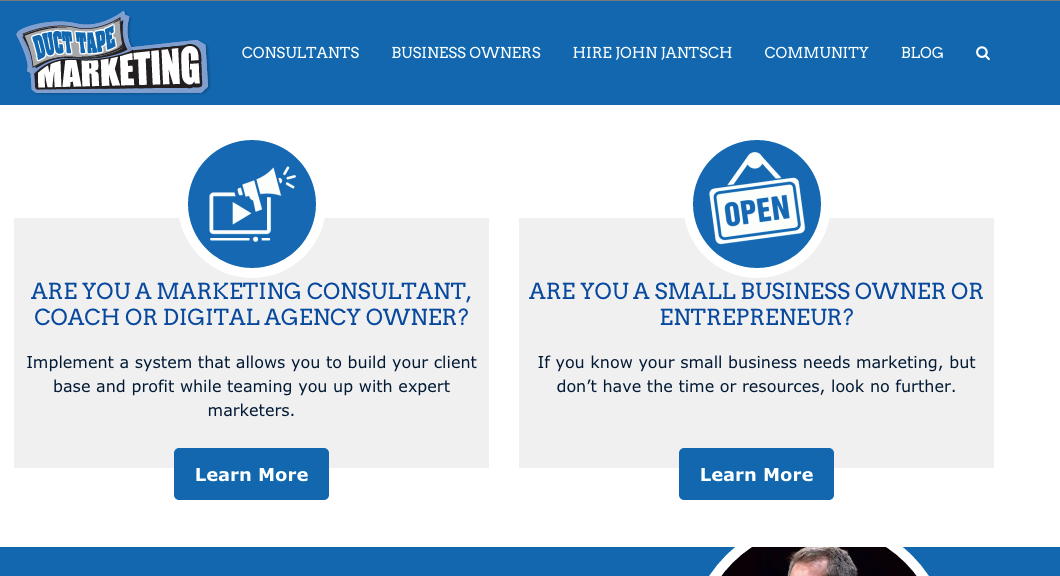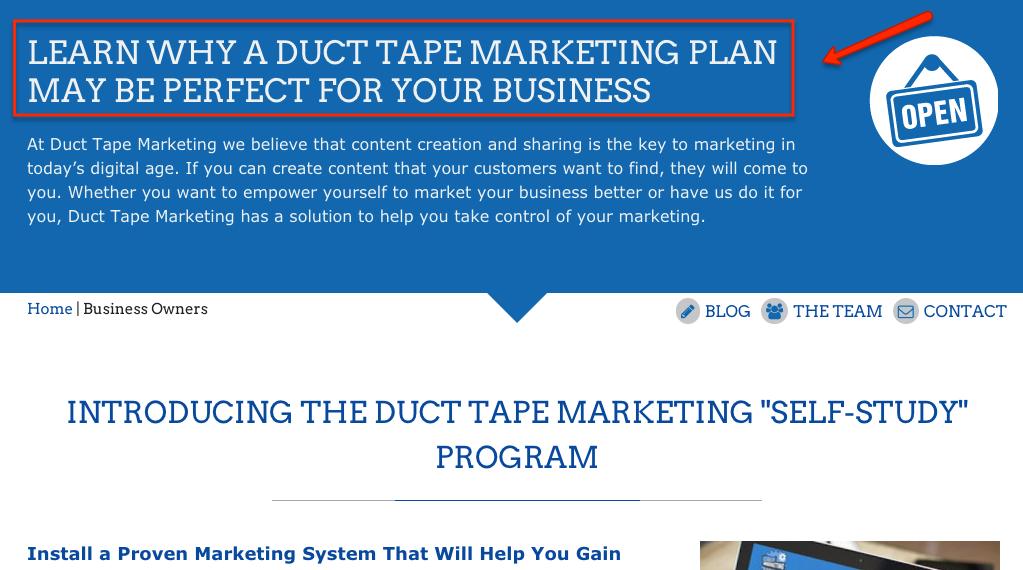
25 May 4 Ways to Launch Just Another Mediocre E-Commerce Store (And How to Avoid Them)
[ad_1]
Launching an online store is cheap and simple.
Just think about it. You choose a clever domain name, pick a beautiful theme, get a membership on your favorite e-commerce platform, and voila!…You can launch.
But here’s the thing: anyone with half-a-brain can start an e-commerce…but only a few can do it successfully.
A 2013 study by ReferralCandy – a Singapore-based referral program software – revealed there were 23,587 established online retail stores in the United States alone at that time (and that number might be even higher now, considering how fast the ecommerce industry is growing).
And when I say “established,” I mean those companies were making at least $100,000 a year.
Just picture this image in your mind:
The Staples Center in Los Angeles at its full capacity (which is 18,118 people, by the way), but instead of seeing a legion of basketball fans, you see thousands upon thousands of entrepreneurs who own a successful ecommerce (and, some of them, might be your direct competitors).
Anyways, my point here is: you can’t just launch, pray, and hope to succeed; you can’t take a mediocre approach nor do what everyone else is doing – you need to stand out.
But how? You ask.
Well, you can start by avoiding the common (and sometimes fatal) mistakes most startups make. In this post, you’ll find 4 of them. Take a look through them, and see if any describe you:
Mistake #1: Sell a Product That Doesn’t Harmonize With The Market
The late Claude Hopkins once said that most marketers fail because they try to sell something people don’t want.
God’s truth.
Now, this might sound obvious at a first glance but make no mistake, it’s really easy to get tricked by your instincts and take a fatal decision. In hopes of “being innovative,” you can spend thousands of dollars on a project that’s bound to fail from the beginning.
The entrepreneurial graveyard is full of “original ideas,” hunches, and dreams.
Take Bobby Darin – the singer – as an example. Back in the 1950s – when he was an unknown young singer in New York – Bobby had a dream: He wanted to make an album of old popular standards, even though the “hottest” genre at that time was old rock and roll.
So he went from company to company, trying to “convince” them to record his music.
Every single music company in the city rejected him, of course. Nobody would take the word of a “nobody,” especially if his idea didn’t harmonize with the market.
Anyways, Bobby finally threw his idea away and focused on what people really wanted – rock and roll. So, he recorded a song called “Splish Splash” (you might have heard of it), and a few months later he had sold over a million records.
All because he understood the importance of harmony.
What’s that? You say Bobby Darin is just a weird case?
Well, you couldn’t be more wrong.
Bobby isn’t an isolated case. Dozens of products have failed because they didn’t harmonize with their markets – The Ben-Gay Aspirin, Intellivision, The Laserdisc, Crystal Pepsi, and The Zune, to name a few.

No, there’s nothing wrong about being original, but instead of trying to reinvent the wheel, find what people already want and then create a product that satisfies that desire.
In other words, start with the prospect, not the product.
You need to become a student of markets. This way, your chances of succeeding will increase exponentially.
Now the question is: How can you study your market?
Three tips:
- Become a social media “listener” – you don’t need to survey thousands of people to know what they want. More often than not, the information you’re looking for is already out there, you only need to “listen.” Tools like Mention.net and Google Alerts allow you to track keywords and intercept relevant conversations. This way, you can be up to date about your market’s desires.
- Study the SRDS (Standard Rate & Data Service) publications – these publications provide you with a database of all the media buyers and sellers in the U.S. This means you can easily figure out the size of your market and its earning potential. You should be able to find an SRDS in your town’s public library, but in case you can’t, you can get one on this website.
- Trust the numbers, not the words – when you interview or survey people, they tend to give you the answers they think you want to hear. So instead of relying on that data, you should always focus on the numbers – what are people really buying? Here’s where an SRDS will come in very handy because you can see what kind of products are performing well in the market. Another option is to create an MVP (Minimum Viable Product) and measure performance based on actual sales.
Note: By no means am I saying interviews, questionnaires, and surveys don’t work. When used right, they can give you valuable insights. However, numbers never lie. Better rely on them.
Mistake #2: Design Your Website Without Your Buyer Personas in Mind
If you design your store based on what you “think” will work, you’re likely to fail. Why? Because you and your prospective customers think very different.
For example, it’s proven that colors affect buying decisions, right? So let’s say you’re going to launch an online electronics store and your target market is Latin America.
Let’s also assume that you decided to use a red color scheme because “you like red.” However, you didn’t know that Latin Americans correlate the red color with religion and blood, so thanks to that dumb mistake many of your visitors will feel very anxious and will decide to leave your website without completing the purchase.
This example might seem silly for the experienced marketer, but it happens very often.
And there’s another problem:
Not only you and your visitors think different, but your visitors’ worldviews will always differ from each other, too.
Let’s emphasize that point:
If you have children, I’m sure you know you can’t educate them all with the same methods. The same way, you can’t treat all your prospects equal.
Instead, you need to segment your audience into subgroups and, then, personalize your marketing message to each subgroup. It’s the most effective way to strengthen your offer.
For instance, if you’re running a vitamins and nutritional supplements store, you might target two different subgroups of people: Fitness enthusiasts and people who don’t have time to cook.
So instead of marketing to those people with the same message, you should personalize it to fit each sub group’s worldview.

And you don’t need to take my word for this. Recent studies suggest that 56 out of 100 people prefer to buy from stores that offer a personalized experience.
John Jantsch of Duct Tape Marketing understands this concept very well. When someone visits the site, he or she can self-select their persona choosing from Duct Tape Marketing’s main buyer personas: Agencies, Coaches and Consultants, and Small Business Owners and Entrepreneurs.

After people click one of the buttons, they’ll see information that’s relevant to their specific needs.

This is obviously a smarter approach than displaying the same information to all your prospective customers, don’t you think?
On average, marketers see a 20% increase in sales when they start providing personalized web experiences.
Now, there’s no one-size-fits-all method for web personalization. However, here are a couple of guides that will get you on the right path:
Mistake #3: Neglect Customer Service
Tell me…what’s the most valuable asset of any business?
Hint: Without it, your entire business would fall down in less than a New York minute.
Have you guessed?
It’s your customer base, of course.
However, many companies don’t seem to understand that. They focus on acquisition, spend thousands of dollars on conversion rate optimization, and even hire an in-house SEO guy, but they forget what is, without question, one of the pillars of any successful e-commerce:
Customer service.
And I’m not exaggerating. No. I brought with me a couple of stats to back that up:
- Some studies have revealed that 84 out of 100 customers have bailed on a transaction or not made an intended purchase because of a poor service experience.
- In 2011, 7 in 10 Americans said they were willing to spend more with businesses they believe provide excellent customer service, according to research by Help Scout.
- Some companies – like The PIG – have even seen a 250% increase in their annual revenue after improving their customer service.
I’m going to be straight with you:
If this doesn’t help you understand the importance of an outstanding CS, you’re…beyond all help!
So here are four effective ways to improve it:
- Reduce customer effort – it’s all about making your customers’ life easier, not the opposite. Make sure they can get support fast and avoid unnecessary steps. For example, instead of just having a dedicated page for customer service, you could add a widget that follows users all over your site, so at the moment they have any problem, they would be able to reach out to you very quickly.
- Offer Multichannel support – 9 in 10 people expect to receive a consistent experience across multiple customer contact channels.
- Provide online chat – as human beings, we tend to be desperate; we hate waiting. Well, online chat is one of the fastest mediums your customers can use to get help. Also, it’s very simple to use. It’s not surprising why 77% of customers prefer to buy at retailers that provide online chat.
- Take care of social media complaints – people tend to complain about products and services through social media. Make sure to intercept those conversations and try to fix the problem as quickly as you can – social media conversations spread like butter on hot bread.
Mistake #4: Rely On The “Popular” Marketing Channels
I know you think this is obvious and simple, and that you aren’t that “stupid” to make this mistake, but I’d say…don’t be too sure.
Listen. The majority of retail stores are built upon three main traffic channels:
It’s not rare that a startup focuses 100% of its resources on one or more of the above channels in hopes of acquiring new customers, and it’s ok. But, to be honest, there are plenty of other channels to focus on.
No, I’m not saying that SEO or PPC aren’t good nor that you shouldn’t focus on them. What I’m saying is that, maybe, you need to start thinking outside the box and look for ways that allow you to grow faster, and I mean, really faster.
To help you put your creative juices to work, here are two proven ways to start:
a) Start an affiliate program
Companies like Kiyonna and AbesMarket.com are crushing it with affiliate marketing, not to mention Amazon, Ebay, and Walmart.
Just think about it for a second. When you run an affiliate program, you only pay your affiliates for every new customer they bring to your company. It’s like advertising but your affiliates take all the risk.
You literally have little to lose and much to win (especially in this day and age). With companies like OMNISTAR – The Voted #1 Affiliate Software for Ecommerce – and LeadDyno in the market, now it’s really straightforward to start your own affiliate program.
b) Embrace word of mouth
Did you know that 65% of new business comes from referrals?
Not only that, according to a study made by Ogilvy, Google, and TNS, 74 out of 100 consumers identify word-of-mouth as a key influencer in their purchasing decision.
If that doesn’t sound interesting to you, I’m sure that nothing will.
Now you might be thinking:
Awesome, but, how can I leverage word of mouth to grow my business? I’m glad you asked. Here are three tips:
- Start a referring program – people are 4 times more likely to buy when referred by a friend, says Nielsen. And the best way to encourage those referrals is by giving away incentives. Dropbox is a famous example. They offered 500MB additional free storage space for every friend you referred. Evernote, on the other hand, offered premium accounts. Amuze’s – a women’s clothing store – gives you and your friends $25 off your next flash sale purchase. The point here is to give users a reason to share your company. This guide from Shopify will guide you step-by-step through the process of creating your own referring program.
- Provide an awesome experience – Texas Tech says that 83% of consumers are willing to refer after an outstanding experience. That’s why you need to spend some time improving your customer journey maps, perfecting your customer service, and a/b testing your platform’s key elements.
- Stand for something – HBR says people aren’t loyal to companies at all. No, they are loyal to what the company stands for. TOMS’ famous “One for One” campaign is a great example of this concept in action. TOMS said: “For every pair you purchase, TOMS will give a pair of new shoes to a child in need.” This campaign created a natural referring environment by triggering one of the most powerful needs in human nature: Altruism.
The Bottom Line
The e-commerce industry is insanely competitive. To get good performance, you need to start off on the right foot and keep the momentum without squandering the opportunity.
The best way to do it is avoiding all the mistakes you can.
And now you know 4 ways NOT to start.
Just remember the words of the late Sam Levenson:
“You must learn from the mistakes of others. You can’t possibly live long enough to make them all yourself.”
What are some good stories you can share about launching an online store?
About the Author: Josue Valles is a content marketing evangelist, strategist and die-hard entrepreneur. He constantly blogs about Inbound Marketing, SEO and Social Media Marketing at Engagebit. You can also follow him on Twitter.
[ad_2]
Source link
Social Media Agency, Social Media, Digital Marketing, Digital Marketing Agency, Search Engine Marketing, SEO, digital marketing agency dubai, video content marketing, crossfit marketing dubai, video marketing dubai, digital marketing agency abu dhabi, facebook marketing dubai, facebook marketing abu dhabi, digital marketing agencies in dubai, social media agency, content marketing dubai, content strategy dubai, branding dubai

